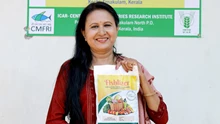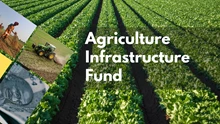
The Union Government told Parliament that although the region under cultivation of medicinal plants has decreased, the value of exports of the plants' output has risen in the last five years.
The Union Ministry of AYUSH is implementing the medicinal plants' portion of the NAM (National AYUSH Mission) scheme, which involves market-driven farming of priority medicinal plants in specified clusters/zones within selected districts.
Help is given under the program for the production of priority medicinal herbs on farmer's land, the development of nurseries with backward linkages for the growing and availability of quality planting material, post-harvest maintenance with forward linkages, primary production, marketing facilities, and other related activities.
A subsidy of 30%, 50%, and 75% of the production expense of particular plant species is given for the farming of 140 medicinal plants, respectively, under this program. While NAM funded the cultivation of medicinal plants on a total of 48,040 hectares from 2015-16 to 2019-20, just about a quarter of that was achieved in 2016-17.
The scheme's farming area rose from 8,509.91 hectares in 2015-16 to 12,462.249 hectares in 2016-17. In 2017-18, the area was 10,328.52 hectares, but in 2019-20, it was 6,794.12 hectares.
Uttar Pradesh is in first place:
In 2016-17, Uttar Pradesh (UP), Madhya Pradesh (MP), and Andhra Pradesh (AP) led the way by cultivating medicinal plants on 1,898 hectares, 2,518 hectares, and 1,513.2645 hectares, individually.
In reality, UP accounted for more than two-thirds of the nation's total medicinal plant farming area in 2018-19. The proportion of UP was 3,633.44 hectares out of a total area of 9,945.47 hectares that year. Intriguingly, UP's share in 2019-20 was zero, with no clarification given in the response.
West Bengal, which initially brought 107 hectares under the scheme in 2015-16, steadily expanded the land under cultivation to 748.38 hectares in 2019-20.
Price of exports has increased:
Despite the decrease in region under the NAM scheme and a drop in export rate, the amount of exported goods has increased over the five years from 2015-16 to 2019-20.
In 2015-16, India exported 15,971.307 tons of herbs under ITC HS codes 1211, according to the Centre's response. In 2019-20, this was reduced to 10,797.243 tons. Exports, on the other hand, rose in value from $23.25 million in 2015-16 to $26.69 million in 2019-20.
The response included information on a number of ITC HS codes, beginning with 1211.Chirata exports fell from 25.25 tonnes in 2015-16 to 4.6 tonnes in 2019-20, according to ITC HS code 12119091. During the same time frame, the volume of exports decreased from $22,187 to $12,427.
Tukmaria (ITC HS code 12119092) exports rose from 730.83 tonnes in 2015-16 to 968.63 tonnes in 2019-20, but the volume of exports decreased from $89,304 to $68,626.
In the past 5 years, the centre has provided financial assistance to farmers across the country in the form of subsidy for 140 listed medicinal plants under the NAM scheme, totaling Rs 191.64 crore. Over these five years, the scheme gained AP ($12.40 crore), MP ($21.04 crore), UP ($24.09 crore), West Bengal ($11.34 crore), and Tamil Nadu ($11.04 crore).












